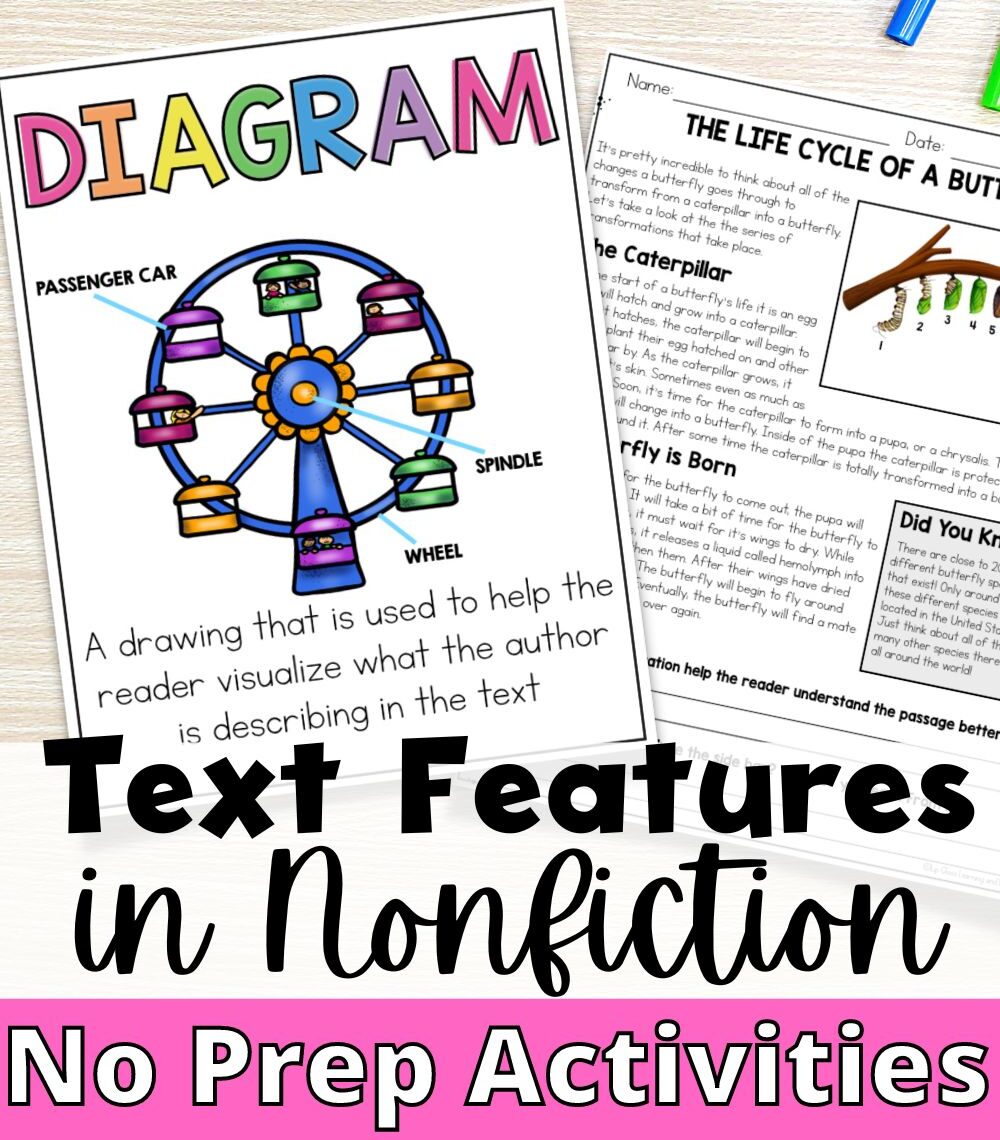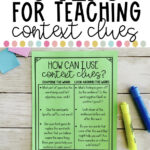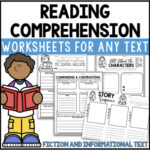Teaching Text Features of Nonfiction
Why Teach Nonfiction Text Features?
Having a solid understanding of nonfiction text features is crucial to our students comprehension of all nonfiction text. When they are familiar with the text features such as maps and captions, they’re truly able to understand an informational text at it’s fullest.
What are Nonfiction Text Features?
It’s important to define what text features are and what they mean for students. Nonfiction text features are the “extras” in the book that they author uses to help the reader better understand the book. We use text features such as captions, labels and maps to get a better grasp on what the author is writing about. Students need to understand how text features help us better comprehend nonfiction texts and how they are often overlooked.
-
Nonfiction Text Features Pre-test
Before diving right into teaching nonfiction text features, I like to give students a pre-test to see what they already know. This data becomes useful when planning how much time to spend on each text feature. A pre-test can then be repurposed into a post assessment after the unit is over to show students how much they’ve grown!
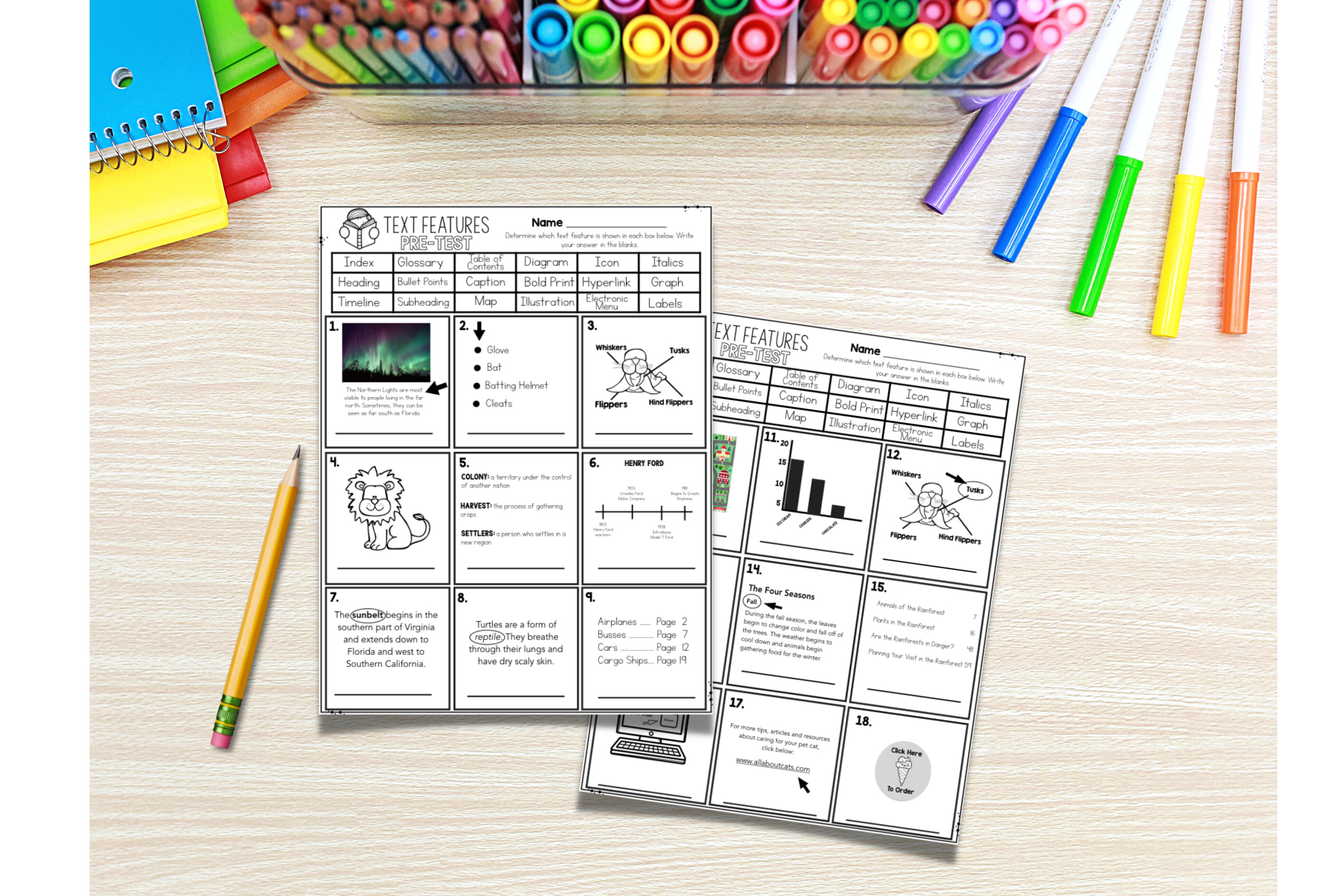
If you’d like to use the non-fiction text features pre-test included in my text features pack there’s a link to download at the end of this post!
2. Introducing Nonfiction Text Features
After students have taken the pre-test it’s time to begin introducing or reviewing no-fiction text features. When introducing nonfiction text features, I like to teach up to two per day. I am big on creating anchor charts with students, but when it comes to nonfiction anchor charts, I like to have them ready ahead of time. Using the anchor charts, I discuss each new text feature. Along with students, I’ll point out the qualities of each text feature and we’ll discuss how this particular text feature can help us better understand a text.
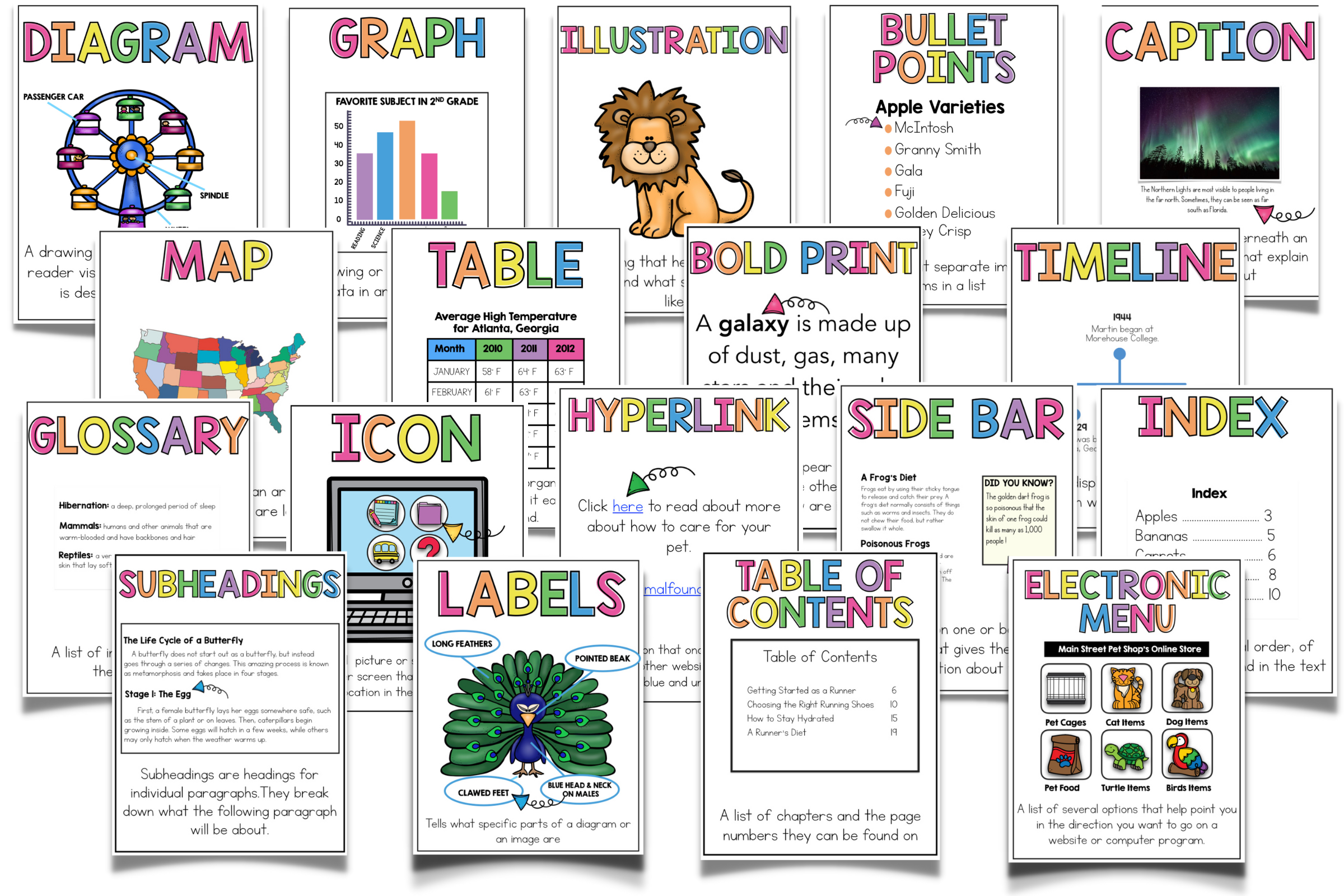
After discussing the specific details of a text feature, we’ll practice locating these text features and seeing how they are used in actual books that I’ve pulled ahead of time. It”s always surprising to see just how many students have never really paid much attention to text features in the first place. If not taught how to read them, students often skim right by only focusing on the main passage.
Just as I use anchor charts to introduce text features, I like to provide students with a sheet of their own to use as a reference when searching for nonfiction text features. This way, students have all of the information on the anchor charts easily available at their desks.
2. Have a Nonfiction Text Features Scavenger Hunt
Students always seem to enjoy a scavenger hunt of any king and it’s equally fun to watch because of how much their brains are working! To create a text feature scavenger hunt, students need some form of a nonfiction text and a sheet to reference all of the text features.
In the past, one way I’ve done this was to check out enough nonfiction books for the entire class and pass out one book per student. if your school uses reading basals that contain informational passages inside, this is another easy option.
Students will then look through the text searching for as many text features as they can find. As they come across a text feature, I like to have students record:
- Which text feature it was they found
- Where they found it
- How it helps them better understand the text
3. practice using Nonfiction Text Feature Worksheets
After students have become familiar with what nonfiction text feature are, it’s time they practice using the text features to locate key facts or information in a text. I don’t want to know how many hours I spent putting together printables for students to practice text features when I was in the classroom. With that in mind, I’ve created these printable nonfiction text feature worksheets that can be used alone or as an extension when teaching about text features.
4. Student Created Book about text features
I love student created books! It’s a great way for students to really show what they know and be proud of what they know because it’s a book they created. You can have students create a simple book on nonfiction text features by having them write the following on each page:
- What text feature it is
- How the text feature helps the reader
- An illustration of what the text feature may look like
You can have students create pages for their books throughout your text feature unit or at the end after you’ve taught each one.
Nonfiction Text Features Worksheets Free
Grab this free nonfiction text features pretest/post test to use with your students as you teach text features!
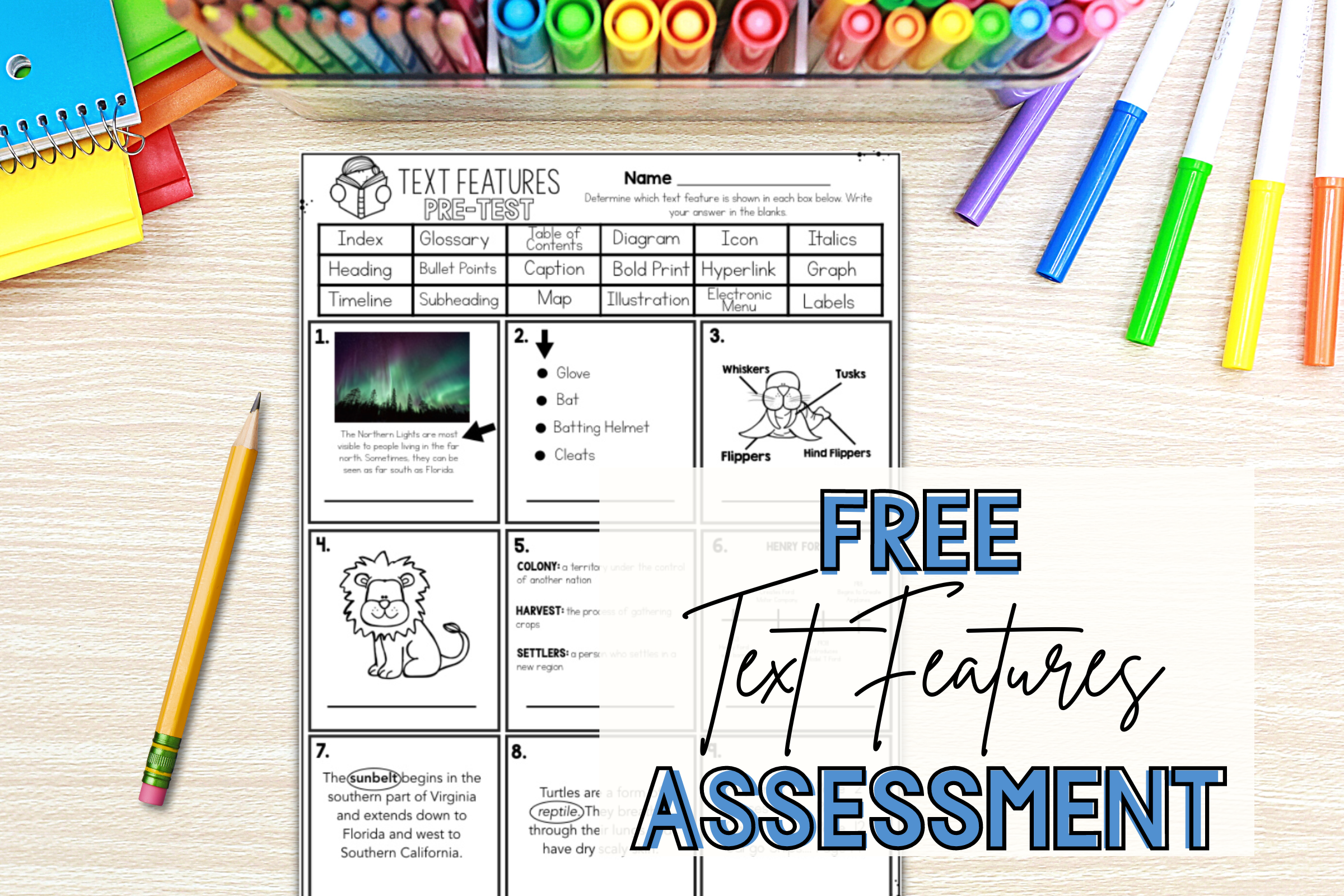
I hope you find these tips and strategies helpful as you teach nonfiction text features to your students. If you use any of these ideas in your classroom or have more of your own, I’d love to hear about them!

